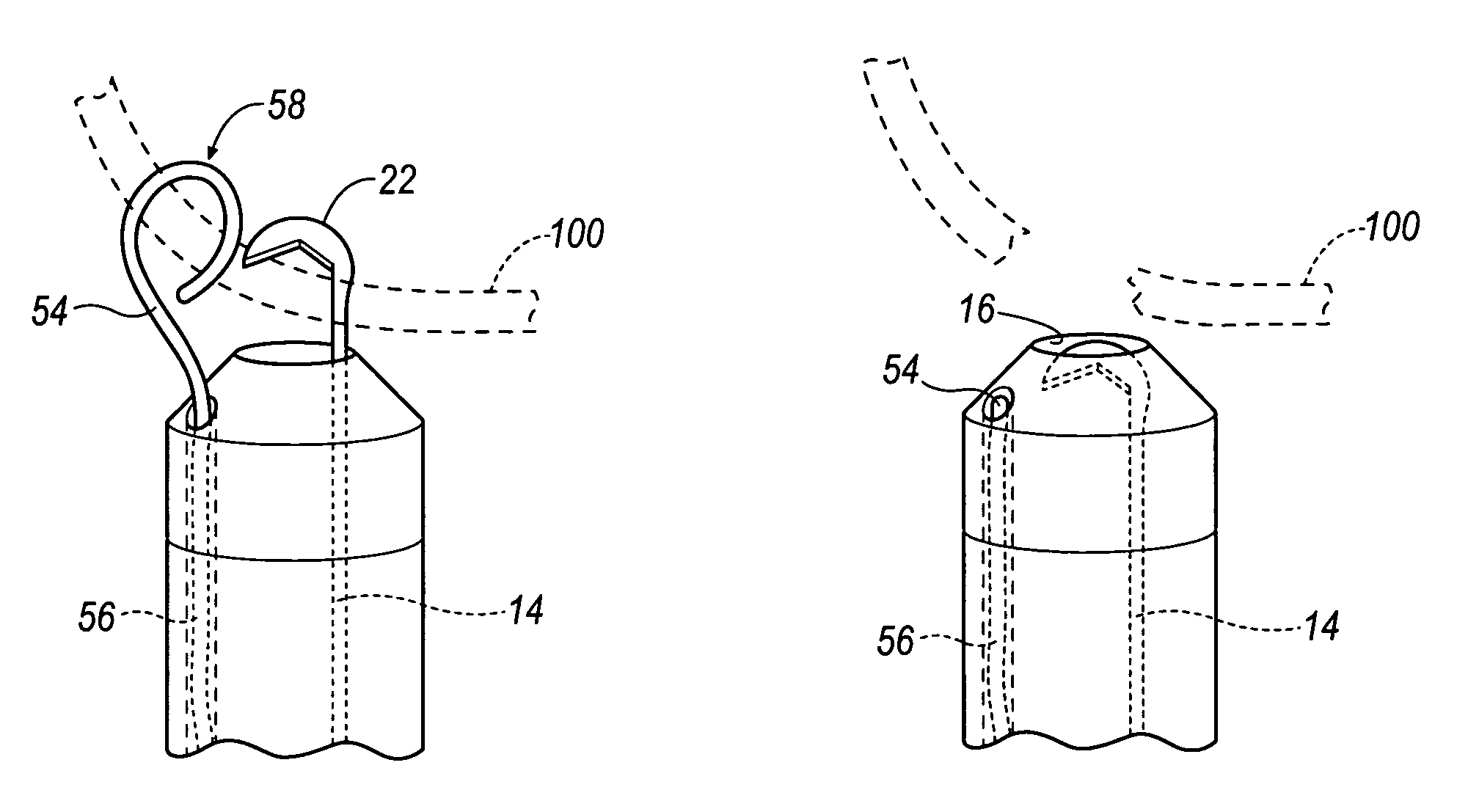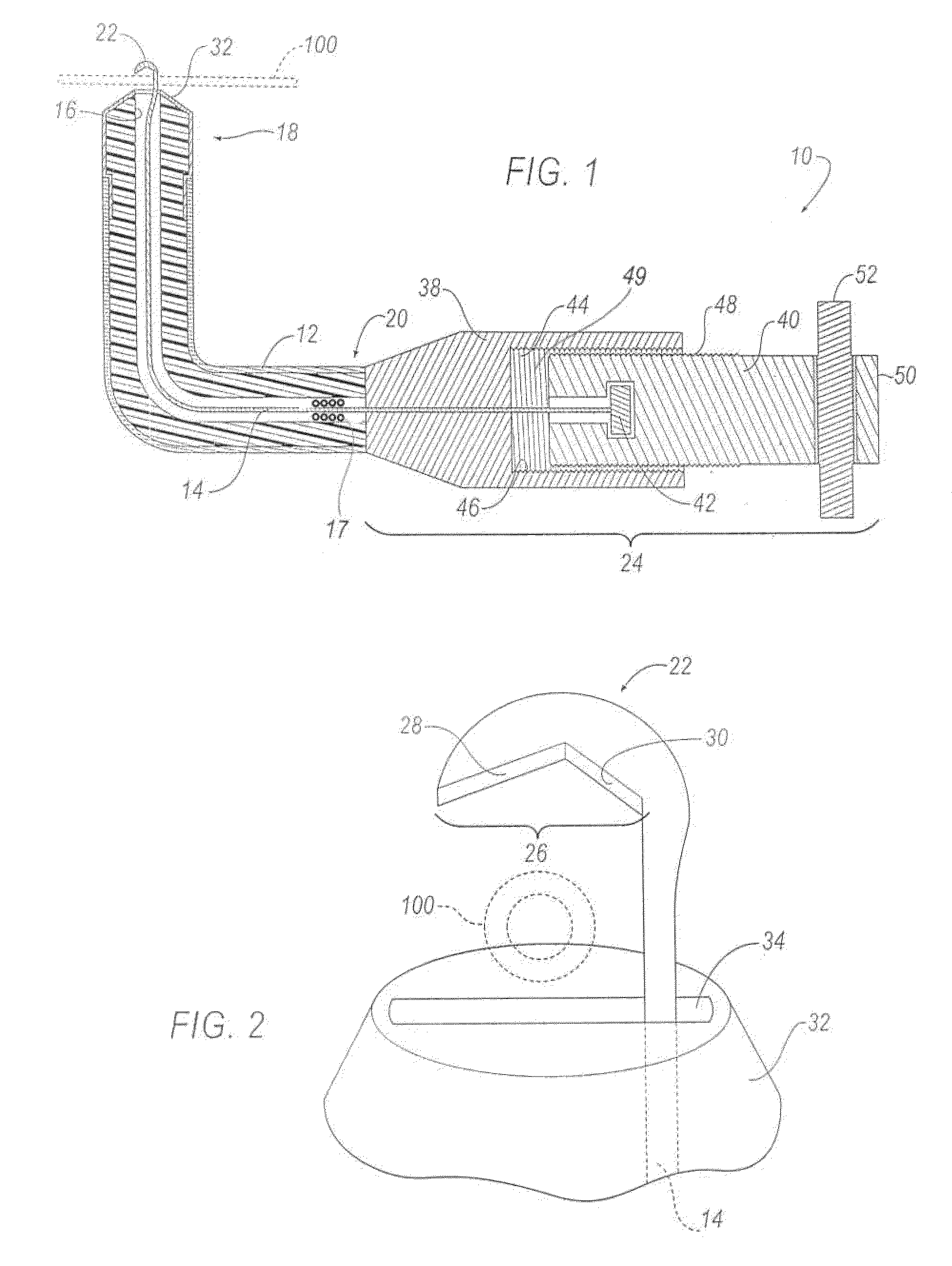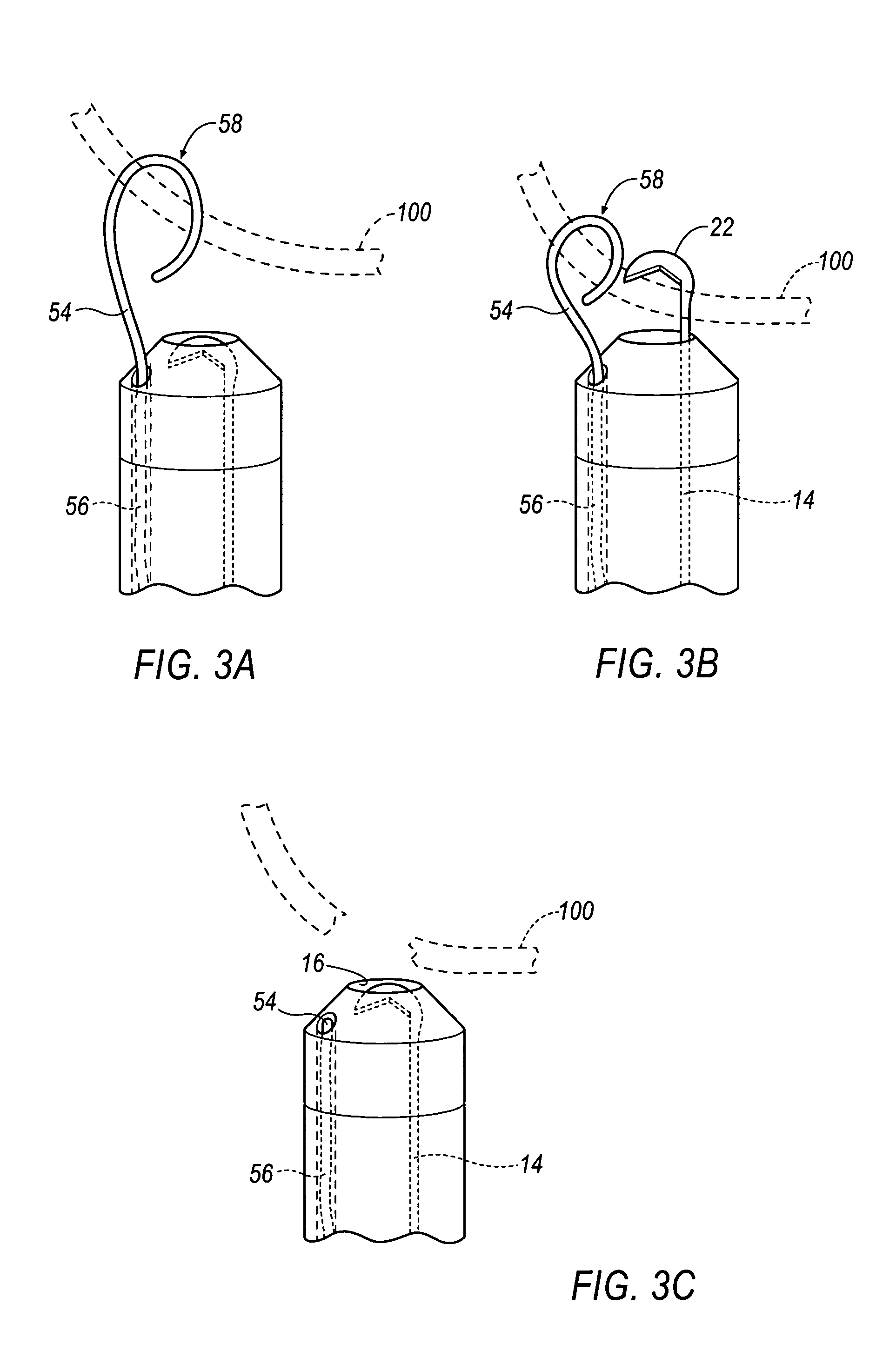Endocardial lead cutting apparatus
a cutting apparatus and endocardial lead technology, applied in the field of endocardial lead cutting apparatus, can solve the problems of increasing electrode resistance, unable to cut, and endocardial leads that are not used in the heart and venous path,
- Summary
- Abstract
- Description
- Claims
- Application Information
AI Technical Summary
Problems solved by technology
Method used
Image
Examples
Embodiment Construction
[0017]Referring generally to FIGS. 1-3, embodiments of an endocardial lead cutting apparatus are generally referred to at 10.
[0018]Referring to FIG. 1, the apparatus 10 includes a tubular member 12. The tubular member 12 is generally flexible and preferably made from a polymer material. Additionally, the tubular member 12 is made from a generally radiopaque material such that the material does not allow the passage of x-rays or other forms of radiation. The tubular member 12 may include reinforcements such as a braid or compressed coil (not shown) to strengthen the tubular member 12 and resist compression during operation.
[0019]The apparatus 10 includes a tension member 14 disposed within the tubular member 12. The tension member 14 is received within a first channel 16 of the tubular member 12 and includes a distal end 18 and a proximal end 20. The tension member 14 is generally flexible and moveable between an extended position and a retracted position. Further, the first channel ...
PUM
 Login to View More
Login to View More Abstract
Description
Claims
Application Information
 Login to View More
Login to View More - R&D
- Intellectual Property
- Life Sciences
- Materials
- Tech Scout
- Unparalleled Data Quality
- Higher Quality Content
- 60% Fewer Hallucinations
Browse by: Latest US Patents, China's latest patents, Technical Efficacy Thesaurus, Application Domain, Technology Topic, Popular Technical Reports.
© 2025 PatSnap. All rights reserved.Legal|Privacy policy|Modern Slavery Act Transparency Statement|Sitemap|About US| Contact US: help@patsnap.com



